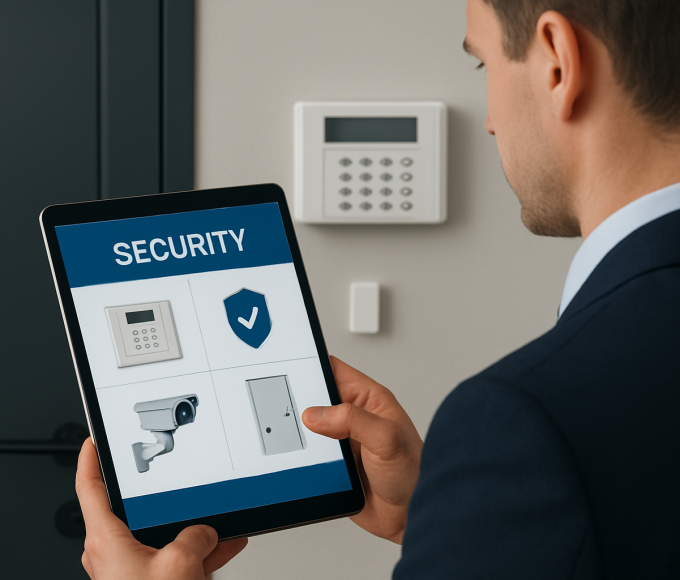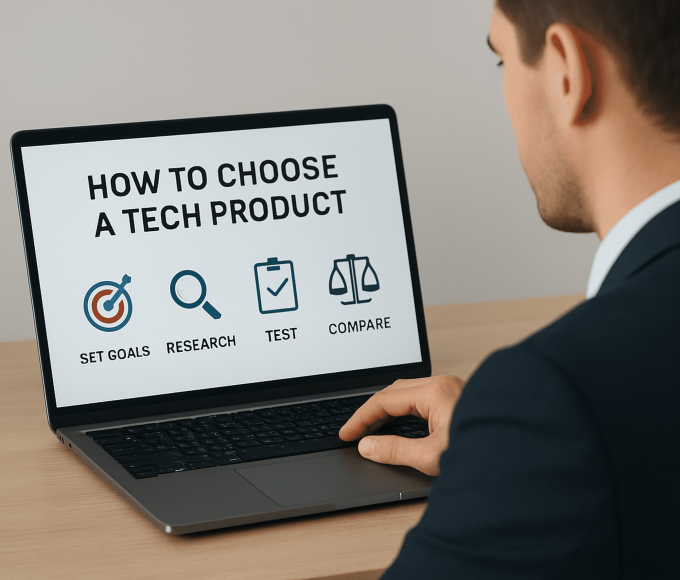Before your first coffee, AI has already helped. It sorted your inbox. It suggested a playlist. Moreover, it predicted traffic on your commute. It may even have adjusted your thermostat. These tiny assists are now standard. Yet many people still ask, “how AI is used in everyday life?”
This blog shows where AI hides in sight. It explains what works, what to watch, and how to get more value. Moreover, it offers quick tips and privacy notes you can use today. You will also see practical examples at home, work, and on the go. In addition, you will learn how to set smart defaults that save time and stress. Finally, you will get a simple checklist to keep your data safer. By the end, you will recognize the quiet AI tools around you. You will also know how to use them with confidence.
What AI Is (and isn’t)
AI means software that learns patterns and makes predictions. It improves as it sees more examples. Therefore, it can sort photos, route traffic, or draft emails. However, it is not magic. It depends on data, rules, and feedback. AI spots patterns and automates routine work. It suggests actions, ranks options, and flags risks. It does not “think” like a person. Instead, it compares your new input to what it learned. Consequently, it can be beneficial and still make mistakes. Always keep a human review step for essential tasks.
Where It Runs
Sometimes AI runs on your device. That is called edge AI. It can be faster and more private. Other times it runs in the cloud. That can handle bigger jobs but needs the internet. In practice, many tools blend both. As a result, you get speed for simple tasks and power for complex ones. Soon, you will see how that balance shows up in daily life.
At Home: Smart, Subtle, and Helpful
Voice & Smart Speakers
Voice assistants set timers, manage routines, and read your calendar. They help with hands-free control while you cook or clean. They can also support accessibility. For instance, they can read reminders aloud. However, review the microphone settings. Disable features you do not need.
Pro Tip: Create a morning routine. Turn on the lights, read headlines, and start coffee with one command.
Smart Appliances & Energy
Thermostats learn your schedule. They warm or cool with less waste. Bright lights dim at night and brighten at sunrise. Meanwhile, plugs turn off idle devices. These tools cut energy costs without daily effort. Nevertheless, label automations clearly. Otherwise, guests may get confused.
Home Security
Cameras recognize packages or pets. Doorbells detect motion and send clips. Moreover, some systems auto-arm at bedtime. These tools offer peace of mind. But they also collect sensitive footage.
Privacy Watch: Limit video sharing. Set short retention windows. Turn off audio capture unless necessary.
4) On Your Phone & Online
Cameras & Photos
Your phone uses AI to sharpen night photos. It removes noise and boosts detail. Portrait mode maps depth for better blur. Additionally, text recognition (OCR) copies words from images. Therefore, you can grab a Wi-Fi password from a photo in seconds.
Messaging & Email
Smart replies suggest quick answers. Priority inboxes surface essential notes first. Spam filters block scams before you see them. As a result, you spend less time triaging. Still, skim for false positives. Important notes can land in Promotions.
Social Feeds & Recommendations
Feeds rank posts using your past behavior. They favor content you interact with. That can be useful, yet it can also narrow your view. Consequently, you may miss new ideas.
To widen your feed, follow diverse sources, save content you genuinely value, and hide low-quality posts. By doing so, you teach the algorithm better habits.
Moreover, many readers still ask, how AI is used in everyday life here? It quietly ranks, filters, and personalizes almost every screen you see.
5) Getting Around: Maps, Mobility, and Travel
Maps & Navigation
Navigation apps predict traffic and suggest reroutes. They also learn patterns from millions of trips, estimating arrival times more accurately. They highlight speed changes and lane choices. For city drivers, they surface parking availability as well.
Ride-Hailing & Micro-Mobility
Ride apps match drivers and riders in real time. They adjust prices according to demand. Meanwhile, they flag risky routes or behaviors. Scooter and bike services optimize battery swaps and placement. Consequently, you find vehicles where you need them most.
Airports & Hotels
AI predicts queue times and suggests earlier security windows. It translates signs and menus on your phone camera. Hotel apps recommend check-in times and room preferences. As a result, travel friction drops. However, always verify, since estimates can vary with weather and events.
6) Health & Fitness
Wearables
Watches estimate sleep stages, recovery, and heart trends. They can flag irregular rhythms or falls. These alerts can prompt earlier care. However, they are not clinical diagnoses. Therefore, treat them as early signals, not final answers.
Apps & Telehealth
Chat tools answer common questions and route you to care. Medication apps remind you to take doses. Fitness apps tailor workouts using your past sessions. Moreover, food apps scan labels and track macros. Still, consider data sensitivity.
Privacy Watch: Review app permissions. Disable location or contacts if not required. Back up data only when necessary.
7) Money & Shopping
Banking & Fraud Detection
Banks use AI to spot unusual spending. For example, they flag charges in a new country. Then they ask you to confirm. That reduces fraud and speeds resolution. Nevertheless, set travel notices to avoid false declines.
Budgeting & Saving
Apps categorize purchases and surface trends. They suggest budgets and alert you before overspending. Some round up purchases into savings. Therefore, you build a cushion with little effort. However, revisit categories monthly. Your life changes; your plan should follow.
Shopping & Deals
Stores predict demand and adjust prices. They also recommend items based on your history, saving you time. However, it can also lock you into a bubble. To break it, search broadly, read reviews, and compare stores. Clear your browsing history when needed to reset recommendations.
8) Work & Productivity
Writing & Meeting Aids
Transcription tools capture meetings. Summaries outline decisions and next steps. Drafting aids help with first versions. However, always edit for tone and accuracy. Keep sensitive content offline when possible.
Spreadsheets & Docs
Bright fill suggests formulas based on patterns. Search finds relevant files by theme, not just titles. Document tools spot grammar errors and inconsistencies. Consequently, your drafts improve faster.
Project & Inbox Triage
AI sorts tickets by urgency and impact. It highlights blockers and overdue tasks. Likewise, email nudges remind you to follow up. Use these as prompts, not orders. You remain the decision-maker.
Readers often wonder How AI is used in everyday life at work. In short, it filters, summarizes, and predicts the best actions. Therefore, it reduces busywork and frees time for deep tasks.
Power Prompts for Busy Days
Great results start with clear instructions. Use simple structures, add context, and set limits so tools deliver what you need.
Write Like a Pro (Fast)
Try this three-line frame for emails, posts, or reports:
- Goal: one sentence (“Confirm meeting details for Friday”).
- Audience & tone: colleagues, friendly-professional.
- Constraints: 120 words, bullet points, action items at the end.
You can refine it by “shorten by 20%” or “add a confident closing line.” Moreover, ask for two variations and choose the best.
Meeting Minutes in Minutes
Paste the agenda or transcript and request: “Summarize decisions, owners, and deadlines. Flag open questions. Keep under 150 words.” As a result, follow-ups become precise and quick.
Personalize Without the Guesswork
For planning, give specifics: dates, budget, headcount, or diet needs. Then say, “Offer 3 options ranked by effort vs. impact.” You cut back and forth and move faster.
Pro Tip: Save your best prompts as text snippets. Name them “Email—follow-up,” “Report—exec summary,” and “Plan—3 options.” Use them daily to scale clarity. This is another subtle example of how AI is used in everyday life to remove friction from routine tasks.
9) Learning, Parenting & Personal Growth
Study Helpers
Study apps build practice sets from your notes. They schedule reviews using spaced repetition. As a result, you remember more with less time. Translation tools convert phrases and check grammar. However, cite sources and verify facts.
Kids & Safety
Parental tools filter content and track screen time. They also suggest age-appropriate videos and games. Meanwhile, they flag suspicious messages. Set clear family rules. Hence, explain why some limits help everyone.
Accessibility
Live captions support calls, screen readers describe interfaces, and reading aids adjust fonts and pace. Consequently, more people can participate fully, which is one of AI’s best impacts.
10) Creativity & Entertainment
Music & Playlists
Recommendation engines build mixes based on mood and context. They learn from skips and saves. Therefore, you discover new artists faster. To avoid echo chambers, try genre radios and human-curated lists weekly.
Photos & Video
Auto-edit features fix exposure and color. Highlight reels assemble clips by faces or events. Background removal speeds design tasks. Save originals in case you want a different style later.
Games & Generative Fun
Story games use AI for dynamic dialogue, and creative tools turn prompts into sketches or drafts. However, respect copyright and consent, share responsibly, and label synthetic content.
11) Risks, Bias & Privacy: What to Watch
Data Minimization
Give apps only what they need. Turn off precise location unless required. Prefer on-device processing for sensitive tasks—update software for security patches.
Bias & Fairness
Algorithms learn from historical data. If that data is skewed, outputs can be unfair. Diversify inputs and question defaults. Additionally, use manual overrides when results look wrong.
Accuracy & Overreliance
AI can be confident and incorrect. Therefore, verify essential facts and numbers. Keep a human in the loop for medical, legal, or financial decisions.
Checklist: Safer AI Use
- Review app permissions monthly.
- Use strong, unique passwords and a manager.
- Enable two-factor authentication.
- Prefer on-device processing when available.
- Set short data retention windows.
- Turn off microphones/cameras if you do not need them.
- Export and delete data if you stop using an app.
- Also, keep a manual backup plan for key tasks.
12) Everyday Examples: How is AI used in everyday life?
Here are quick, concrete examples you likely use already. These show how AI is used in everyday life across tasks:
- Your phone brightens the screen based on ambient light.
- Email flags a suspected phishing attempt.
- Maps reroute you around a crash.
- A watch warns that your heart rate spiked.
- A note app extracts text from a whiteboard photo.
- An online form autocompletes your address.
- Furthermore, a news app clusters similar stories.
- A budgeting tool warns you about a double charge.
- Moreover, a recipe app adjusts servings and grocery lists.
Local vs. Cloud AI: Get Speed, Keep Privacy
Not all AI runs the same way. Understanding where models run helps you balance convenience and control.
When to Prefer On-Device (Local)
Choose local features for notes, photos, and health data. They’re faster, work offline, and keep raw data on your phone. In addition, local transcription for quick memos reduces exposure while staying searchable.
When Cloud Makes Sense
Use cloud features for big jobs: extensive file search, multi-language translation, or team documents. Cloud models see more context so that they can connect dots across apps. However, check retention settings and opt out of training where possible.
A Simple Decision Flow
- Is the data sensitive? If yes, go local or anonymize.
- Is the task heavy or collaborative? If yes, use the cloud with strict controls.
- Will you repeat this weekly? If yes, automate with a routine and a calendar reminder.
Privacy Watch: Review dashboards quarterly. Rotate app access, shorten retention windows, and re-approve only what you still need. In short, design your stack so AI helps without oversharing.
13) Quick Start: Turn on the Right Features
Use this short setup to boost value today.
- Update your phone and key apps. You get new on-device AI features.
- Review privacy settings—Disable precise location for casual apps.
- Enable helpful routines: morning news, bright lights, and commute alerts.
- Create custom categories for recommendations. Teach the system what you like.
- Set a monthly “AI audit.” Remove stale apps and revoke old permissions.
Additionally, set clear labels for automations. Otherwise, family members may be surprised when the lights dim at 10 p.m.
14) FAQs
Is AI listening all the time?
No, usually. Devices often wake to a specific word. However, check settings and mute mics when not needed.
Can I use AI without sharing data?
Often, yes. Edge features run locally. Moreover, many apps have privacy modes. Read the data-use screen during setup.
How do I reduce algorithm bias in my feeds?
Follow diverse sources, hide low-quality posts, and save content you truly value. The system learns better.
Do I need paid tools?
Not always. Free features cover most daily needs. However, subscriptions can add security, storage, or advanced controls.
Make Everyday AI Work for You
AI is now embedded in small moments. It tunes photos, triages messages, and maps safer routes. It watches for fraud. Moreover, it adjusts your home’s temperature. It suggests the following best action at work. Used well, it saves time and reduces stress. Used mindlessly, it can mislead or over-collect data.
Now you have the language and the checklists to steer. You know where it runs and when to trust it. Most importantly, you can answer the question, How AI is used in everyday life with confidence. Start with one clever tweak this week. Then, review the results next month—small, steady steps compound into meaningful improvements.















Leave a comment